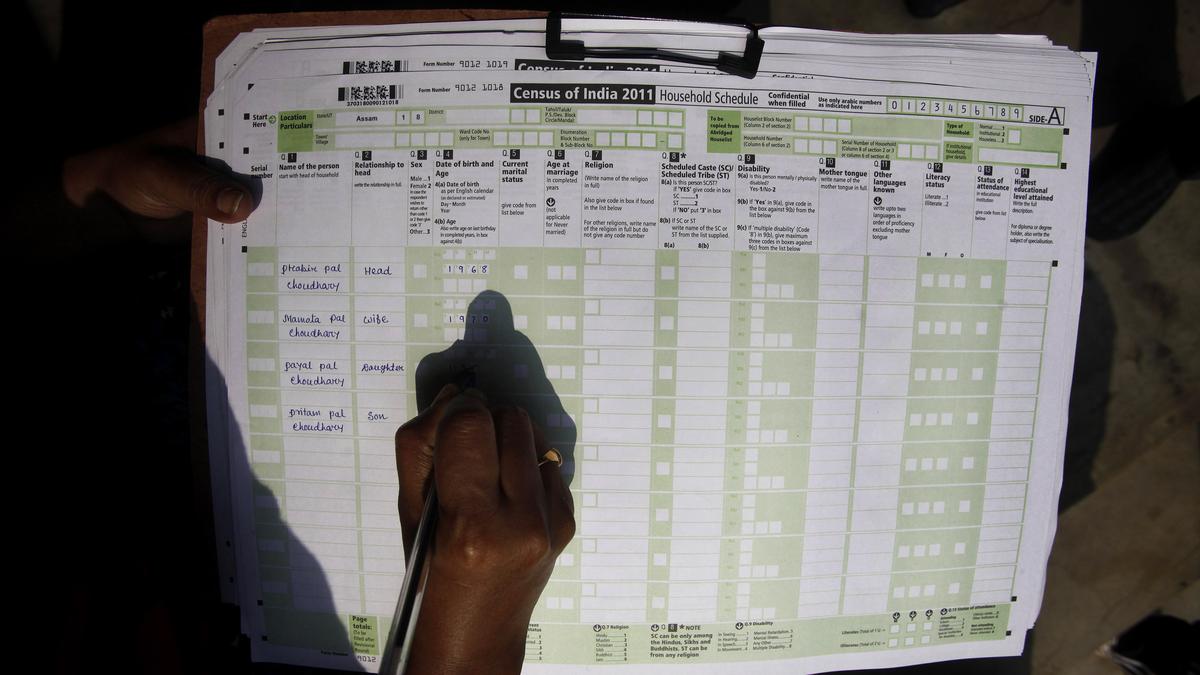Population Census 2027

- 05 Jun 2025
In News:
India’s next population census is scheduled to be completed by March 1, 2027, marking a historic return to the decennial exercise after a 16-year gap—the longest in independent India’s history. Announced by the Ministry of Home Affairs (MHA), this census will be India’s first digital census and the first to include caste enumeration since Independence.
The census will be conducted intwo phases:
- House Listing and Housing Schedule
- Population Enumeration (including caste data)
The enumeration process will run from April 1, 2026 to February 28, 2027, with March 1, 2027, set as the reference date for most of India. For Ladakh and snow-bound areas of J&K, Himachal Pradesh, and Uttarakhand, the reference date will be October 1, 2026.
This exercise will be conducted under the Census Act, 1948 and the Census Rules, 1990. A gazette notification, expected on June 16, 2025, will formally announce the schedule. Around 25–30 lakh enumerators, largely schoolteachers, will be retrained to use a custom mobile app—a key component of the digital data collection process.
A major inclusion in this census is caste enumeration, extending beyond the current Scheduled Caste (SC) and Scheduled Tribe (ST) data. A separate input field will record caste data for all categories, making it a potentially transformative tool for targeted welfare policies and social justice initiatives.
However, the 2027 Census is not just a demographic exercise—it holds critical constitutional and political significance, especially in the context of delimitation and women's political reservation.
Under Articles 81 and 82 of the Constitution, the next delimitation of Lok Sabha and State Assembly constituencies must be based on the first census after 2026. The current 543 Lok Sabha seats are still based on the 1971 Census. The 42nd Constitutional Amendment (1976) had frozen seat redistribution, which was extended by the 84th Amendment (2002) until after 2026.
Once census data is finalized (likely by late 2027), Parliament must pass a Delimitation Act, following which a Delimitation Commission—headed by a retired Supreme Court judge and including the Chief Election Commissioner—will be constituted. This commission will determine the new seat allocation formula based on population per constituency.
Importantly, the implementation of 33% reservation for women in Parliament and State Assemblies, as mandated by the Women’s Reservation Act, is contingent upon the completion of this delimitation exercise.
This has triggered concerns, particularly from southern states like Tamil Nadu, which have seen slower population growth due to effective family planning. Redistribution based solely on population may reduce their parliamentary representation, leading to demands—such as by Tamil Nadu CM M.K. Stalin—for extending the status quo based on the 1971 census until 2056.
Political opposition has also criticized the delayed timeline, with Congress terming the 23-month postponement from 2021 as administrative inefficiency.
Moreover, there was no mention of updating the National Population Register (NPR), which is the first step towards the controversial National Register of Citizens (NRC).
In sum, Census 2027 is not just a statistical necessity but a politically sensitive and constitutionally mandated process, central to the future of electoral representation, gender justice, and federal balance in India.
